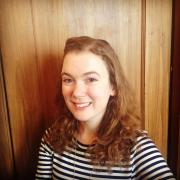I love gift guides. I love the holiday season when bloggers decide that they're gift mavens and publish lengthy lists of possible gifts for husbands, kids, pets, bank tellers, baristas, etc. Like window shopping in my pajamas, I like taking a long look at beautiful things that I will probably never buy.
Creating a registry is like doing the gift guide dance backwards. You're providing your friends and family with a handy list of what they should buy: basically, a you-themed-gift-guide. And as you set that up, you may start to feel like those top baby product lists, with their decadently priced nontoxic kid gear, don't quite make sense for your gift buying public.
Green baby gear doesn't have to be expensive. We're skipping the product-pitching gift guide and helping you develop a nontoxic baby registry strategy that makes sense for your life and your budget.
Baby Bedding: Conventional bedding can be home to pesticides, chemicals, allergens, and more. Your best bet when it comes to fabric is organic cotton, which is easily accessible, soft and hypoallergenic. You can also try textiles made from hemp or bamboo. Re-Nest offers a detailed breakdown of different, nontoxic materials to look for as you select sheets, pillows, and more.
Here are a few key words to avoid as you pick out bedding:
- Permanent press
- No-iron
- Crease-resistant
- Shrink-proof
- Stretch-proof
- Water repellent or water-proofed
- California TB 117
Prevent allergic or asthmatic reactions by avoiding down feathers in your baby bedding. To avoid flame retardants, the Green Science Policy Institute recommends choosing pillows made from polyester, down, wool (also a naturally flame retardant fabric), or cotton.
Toys: We know toxic chemicals like PVC don’t belong in kids toys. Unfortunately, toy manufacturers aren’t always on the same page. Look up toys on HealthyStuff.org and choose toys from their “No detected chemicals of concern” list and “Low detected chemicals of concern” list when possible. As you browse the HealthyStuff site, you can start to organize a list of toys that interest you with their product list tool. You can also find product ratings and suggestions for toys and other baby products on the Good Guide.
Furniture: For your baby crib, choose solid hardwood if possible and avoid particle board. Choose a nontoxic finish by looking for the following words:
- Low-VOC stains and sealants
- Water based stains and sealants
- Finished with tung oil and beeswax
If you're going to choose one piece of nontoxic furniture, the crib is the way to go: Newborns sleep an average of 16 to 17 hours a day. For all other nursery furniture, Healthy Child, Healthy World has a great nontoxic furniture buying guide, and The Smart Mama offers tips on what you can do to keep your nursery safe if/when you use particle board or off-gassing furniture. Check crib safety ratings by visiting Consumer Reports' cribs page.
Bathtime: As you select baby cosmetics, use this list from the Environmental Working Group of the top chemicals to always avoid in kids' cosmetics:
- 2-Bromo-2-Nitropropane-1,3-DIOL (or Bronopol)
- BHA
- DMDM Hydantoin
- Oxybenzone
- Triclosan
- Boric Acid and Sodium Borate
- Dibutyl Pthalate
- Toleune
The Environmental Working Group has a handy tip sheet that shows you which chemicals to look out for, and recommends products that are nontoxic or less toxic than their conventional counterparts. (You’ll notice that EWG recommends avoiding conventional baby powder completely. For a nontoxic solution, check out this easy, two ingredient DIY baby powder recipe from The Smart Mama).
Bottles: Your best, least toxic option is tempered glass when it comes to bottles. If you prefer plastic, stick to these tips:
- Avoid polycarbonate #7 plastic, which has been shown to release bisphenol-A
- Choose polypropylene (#5) or polyethylene (#1)
- Don't buy bottles with decorations on the inside
- Don't heat or freeze milk in plastic bottles, even if you choose a safer plastic
- Be careful with products that label themselves as "BPA-free"; they may be replacing BPA with a different toxic alternative.
Visit Greener Penny for a list of BPA-free baby bottles, or look up bottles on the Good Guide , which helps you find healthier, less toxic options for a wide variety of products.
Additional Resources:
Green and Non-Toxic Essentials for Baby by Katy Farber, Non-Toxic Kids: http://www.non-toxickids.net/2011/04/green-non-toxic-essentials-for-baby.html
Baby Shower Kit: Choosing Shower Gifts by Oregon Environmental Council: http://www.oeconline.org/our-work/healthier-lives/tinyfootprints/babyshowerkit/babyshowerkit-babyshowergifts
Giving Green and Responsibly at a Baby Shower by Janelle Sorensen, Healthy Child Healthy World: http://healthychild.org/blog/comments/giving_green_and_responsibly_at_a_baby_shower/
Do you have tips for setting up a nontoxic baby registry? Leave them in the comments, or visit our Facebook page and share them with the MomsRising community.



The views and opinions expressed in this post are those of the author(s) and do not necessarily reflect those of MomsRising.org.
MomsRising.org strongly encourages our readers to post comments in response to blog posts. We value diversity of opinions and perspectives. Our goals for this space are to be educational, thought-provoking, and respectful. So we actively moderate comments and we reserve the right to edit or remove comments that undermine these goals. Thanks!